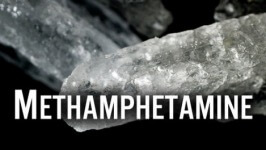Meth Lab Cleanup Issues
Typically, prior to cleanup, authorities examine, record & remove lab-related chemicals, apparatus, & associated equipment suspected of being used in the process before reporting the incident & investigating. Removing equipment alone does not make it safe !
Dependant on the cooking process, length of operation, storage & disposal of by-product waste, and identified levels of methamphetamine above acceptable levels (0.5μg/100cm2) the risk of exposure at a former meth lab can be significant until a meth lab cleanup is completed. Only a competent, trained & experienced technician can recognize the varied restoration issues & adapt procedures, methodology & response to a meth lab cleanup.
After the removal of illicit lab equipment & chemicals, residual amounts of meth, other chemicals & byproducts may persist indefinitely on interior surfaces & furnishings, being absorbed into structures, walls, & fixtures that will require a significant decontamination process, removal of affected contents & waste, and in some cases removal of affected building materials not suitable for restoration & remedial building works.
Potential areas of contamination can be divided into primary & secondary areas, with varied approaches to decontamination or as detailed within Remediation Action Plans (RAP)
Typical primary areas –
• Processing or ‘cooking’ areas – Significant contamination in these areas may be caused by spillage of chemicals, boil-overs, explosions, fumes & gases created during the heating & distilling processes. Internal areas affected may include floors, walls, ceilings, equipment, benches, cupboards, plumbing fixtures & drains (including septic tanks), air conditioning & HVAC systems.
• Disposal Areas – Internal sinks & drains, toilets, bathtubs & showers, floor drains, vents & extractors. Outdoor areas include, soil, groundwater, sewer & storm water drains, council waste or dumped on side of roadways & bush land.
• Storage Areas – Contamination may be caused during transfer of chemicals, leaks, spillage, chemical reactions & open container vapours.
Secondary areas of contamination include –
• Migration of fumes or during chemical movement, such as hallways or high traffic areas.
• Common areas in multiple dwelling structures or adjacent apartments & rooms can become contaminated.
• Shared ventilation, plumbing & HVAC systems can contaminate other areas of the home, hotel rooms, & business premises.
Why Contract a Professional Restorer ?
Dealing with hazardous levels of dangerous drug residues should not be left to untrained or inexperienced providers. Attempting to clean a property with limited understanding of restoration principles, an awareness of chemical hazards or improper cleaning techniques for a structure may prove to be a very dangerous & a costly exercise for owners & future occupiers.
Our meth lab cleaning team are professionals & dedicated, committed to providing an efficient, practical & cost effective decontamination process that is managed consistent with Australian guidelines & RAP requirements. As a family owned & operated business, our clients can rest assured that our team can manage all facets of restoration.
Furthermore, a professional restorer provides –
• Certified & experienced, meth lab decontamination technicians with qualifications (IICRC) in restoration services.
• Initial site assessment & testing services – Quality controlled sampling for laboratory analysis by a NATA (Australia) & IANZ (New Zealand) accredited laboratory or presumptive test.
• Remediation Action Plan (RAP) input or compliance to assist Industrial Hygienist & authorised officers develop effective strategies for cleanup, in line with restoration industry standards.
• Safe work practices- Work, health & safety standards for HAZMAT situations (containment, waste collection, & safe restoration procedures for chemical biohazards)
• Environmental Protection – Bio-degradable cleaning treatments & controlled industrial wash down methods to contain & collect waste, lawfully disposing of all contaminates
• Overall, providing a total restoration solution – from site preparation, management of external providers, hazardous waste & contents removal, property wash down & chemical decontamination, to site clearance & reporting.
Our manager has over 20 years policing experience dealing with this type of crime, having investigated Drug Manufacturing since 2005. Combined with certification & qualifications of Meth Lab Cleaning, Decontamination & Testing you can now rely on our ability to Assess, Manage & Remediate any site of contamination from Meth Labs, Cannabis Houses & other Biohazard situations.
 Within Australia the illegal manufacture of the drug Methamphetamine in Clandestine Drug Labs, known as Meth Labs, has been rapidly increasing every year, whereby in New South Wales & Queensland alone, police seize & investigate several hundred Meth Labs every year. Properties used to manufacture can become contaminated by a one off process or ongoing efforts by criminals who blend into the community using their home, rental, factory, or motel room to manufacture drugs.
Within Australia the illegal manufacture of the drug Methamphetamine in Clandestine Drug Labs, known as Meth Labs, has been rapidly increasing every year, whereby in New South Wales & Queensland alone, police seize & investigate several hundred Meth Labs every year. Properties used to manufacture can become contaminated by a one off process or ongoing efforts by criminals who blend into the community using their home, rental, factory, or motel room to manufacture drugs.






